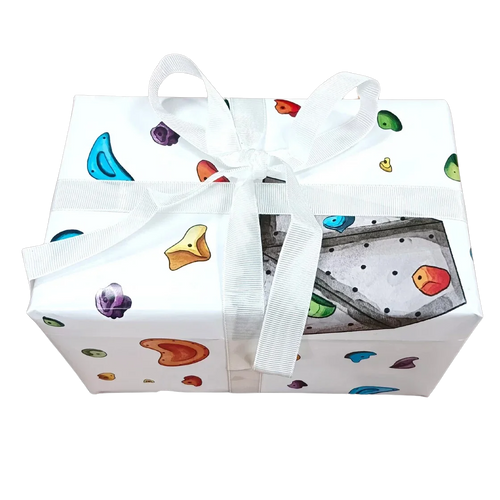- Introduction
- What is a Boulder Block?
- Why a Quality Boulder Block is Important
- Key Factors to Consider When Choosing a Boulder Block
- How to Maintain Your Boulder Block
- Conclusion
- FAQs
Introduction
Climbing enthusiasts know that having the right gear can make all the difference in your climbing experience. One essential item for both beginners and seasoned climbers alike is the boulder block. Not just any block will do—choosing the perfect one can enhance your training sessions, improve your technique, and prevent unnecessary injuries. In this guide, we’ll break down everything you need to know about selecting the ideal boulder block to take your climbing to the next level.
What is a Boulder Block?
A boulder block is a compact, padded surface designed for climbers to practice their technique, footwork, and strength training. Often used for bouldering workouts or warm-ups, these blocks provide a safe and supportive environment for training at home or at the gym. Boulder blocks come in various sizes, materials, and features to cater to different climber preferences.
Why a Quality Boulder Block is Important
Choosing the right boulder block isn’t just about comfort—it’s about safety and durability. A well-designed block helps you practice without worrying about injuries from falling or slipping. It should also be made from materials that provide the perfect balance of cushioning and firmness. Investing in a high-quality boulder block means more effective training sessions, faster skill improvement, and a better climbing experience overall.
Key Factors to Consider When Choosing a Boulder Block
Choosing the right boulder block may seem like a simple task, but with so many options available, it’s important to keep several factors in mind to ensure you pick the perfect one for your needs.
Size and Weight
Boulder blocks come in various sizes, from small blocks for portable use to larger ones for gym setups. The size of the block will influence the type of training it can support, so consider your available space and how much portability you need. A compact, lightweight block is ideal if you plan on taking it to different climbing locations or for outdoor training sessions.
Durability
You’ll want a boulder block that can withstand heavy use. Since bouldering sessions can be intense, the material and stitching quality should be able to endure constant wear and tear. Look for blocks with strong seams, reinforced edges, and a solid build that will last for years without losing their shape or cushioning properties.
Material
The material of a boulder block impacts its durability and comfort. Common materials used include high-density foam and synthetic fabrics. High-density foam is known for its firm support while still providing enough padding to protect from impacts. Check whether the block’s cover is made of water-resistant, durable fabric to avoid wear from moisture or rough use.
Surface Texture
The surface texture of a boulder block plays a crucial role in its performance. A textured surface gives you the ability to practice various movements with control, helping to simulate real climbing conditions. Whether you’re doing core exercises or working on your footwork, the surface should provide enough friction without being too rough to cause discomfort.
Portability and Storage
If you like to take your training sessions outdoors or to different locations, portability is key. Many boulder blocks are designed to be foldable, lightweight, and easy to carry. Additionally, some models come with built-in handles or straps for easy transportation. For storage, ensure the block is easy to compress and store when not in use.
How to Maintain Your Boulder Block
Caring for your boulder block is essential to ensure its longevity and effectiveness. Regular cleaning is a must—wipe down the surface with a damp cloth after each use, and allow it to dry completely. Check for any wear or damage, especially in the seams or cover. If you notice any tears or breaks, it’s best to repair them immediately to prevent further damage.
Conclusion
When selecting the perfect boulder block, keep in mind that your choice should align with your specific training needs, the intensity of your workouts, and how often you plan to use it. By considering factors like size, material, durability, and portability, you can make an informed decision that helps elevate your climbing performance. Ready to take your climbing to the next level? Visit Climbers Gift for top-quality boulder blocks and other climbing essentials that will enhance your training sessions and improve your climbing technique.
FAQs
How to Buy a Boulder Block at Climbers Gift?
Visit the Climbers Gift website, browse our range of high-quality boulder blocks, and choose the one that suits your training needs. We offer secure payment options and fast delivery for your convenience.
What is the best size for a boulder block?
The best size depends on your available space and whether you need portability. If you have limited space, a compact, foldable block is ideal. Larger blocks are best for those with dedicated workout areas.
Can I use a boulder block outdoors?
Yes, many boulder blocks are designed to be portable and durable enough for outdoor use. Just ensure that the material can withstand outdoor conditions like moisture and dirt.
How often should I replace my boulder block?
You should replace your boulder block when you notice significant wear and tear, especially if the padding has flattened or the cover is damaged. A well-maintained block can last several years.
Are boulder blocks suitable for beginners?
Absolutely! Boulder blocks are a great training tool for climbers of all levels. They help improve footwork, balance, and strength, making them suitable for both beginners and advanced climbers.

